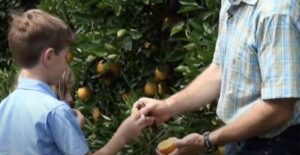The following piece was issued by the FDOC in response to a February 26, Quartz article “How America fell out of love with orange juice.”
Dear Mr. Ferdman:
I had the chance to read your article, “How America fell out of love with orange juice” and wanted to follow-up with clarification around several points in your piece that I hope you will find valuable as you continue to cover the beverage category and trends. I am grateful that you reached out to the economist here at the Florida Department of Citrus, but I am concerned that the extent to which you focused on singular views of data and industry trends creates a misleading perspective on our industry.
First, I would challenge the notion that America “has fallen out of love with orange juice.” America’s favorite fruit juice remains highly popular and enjoys phenomenal market penetration. There is no doubt that the industry faces serious challenges, but your piece thoroughly overlooks the significant opportunities that accompany those difficulties.
While consumption has dropped, it remains high relative to many of the other beverages with which it should be compared – and, indeed, some of the “competitive” products that are acquiring market share are actually blends that include orange juice. Furthermore, your consumption chart (“US orange juice consumption”) clearly indicates that overall consumption remains comparable to the consumption of the 1970s and 1980s, despite the supply challenges faced by our industry today.
The fact that production has been on a downward trend for reasons related to weather as well as disease also undermines your premise: Americans haven’t “fallen out of love” with OJ – it simply isn’t as abundant as it has been at other points in recent history.
As you may know, however, there are recent developments that hold great promise for stabilizing and ultimately reversing the downward trend in production. In addition to promising prospects for treatment of greening coming from research already underway, the recently enacted federal Farm Bill includes $125 million over the next five years for greening research. This is an unprecedented investment in our industry, and we fully expect to turn the tide. Production will bounce back, as it has after hurricanes, canker and other challenges throughout the last century.
Unfortunately, you also relied heavily on tired critiques of specific production practices, missing the fact that, by law, 100 percent orange juice is made only from oranges, using a very straightforward process. Oranges are washed and the juice is extracted by squeezing the oranges. Seeds and particles are strained out. Then, orange juice is pasteurized – a century-old process widely accepted by global health organizations where the juice is heated to an elevated temperature for a short amount of time to ensure food safety.
From a nutrition standpoint, it is important to note that one-hundred percent orange juice has no added sugar; it contains only natural sugars present in the juice when squeezed from the orange. And, as with all foods and beverages that provide calories, 100 percent orange juice should be consumed in appropriate amounts that fit with an individual’s overall diet and lifestyle.
I also wish to clarify another point: we’re not proposing consumers simply drink “less” of 100 percent orange juice. Rather, our approach seeks to educate consumers and health professionals about the proper serving sizes. Recognized by the 2010 Dietary Guidelines for Americans and the USDA MyPlate, an 8-ounce serving of 100 percent orange juice helps Americans meet daily fruit intake and is packed with nutrients, such as potassium, folate, and thiamin, which are carried over from the fruit to the juice.
And while the picture of the American breakfast table is indeed changing, it presents both a challenge and an opportunity. Our research shows that younger consumers enjoy 100 percent orange juice at any time throughout the day, which creates an opportunity at other day times. Orange juice has a high household penetration at around 70 percent, which is proof that it remains a beloved beverage that Americans enjoy any time of day – from breakfast through late-night cocktails.
If you have any additional questions I’d be happy to serve as a resource in the future. Thanks again for your time and consideration.
Sincerely,
David Steele
Florida Department of Citrus


